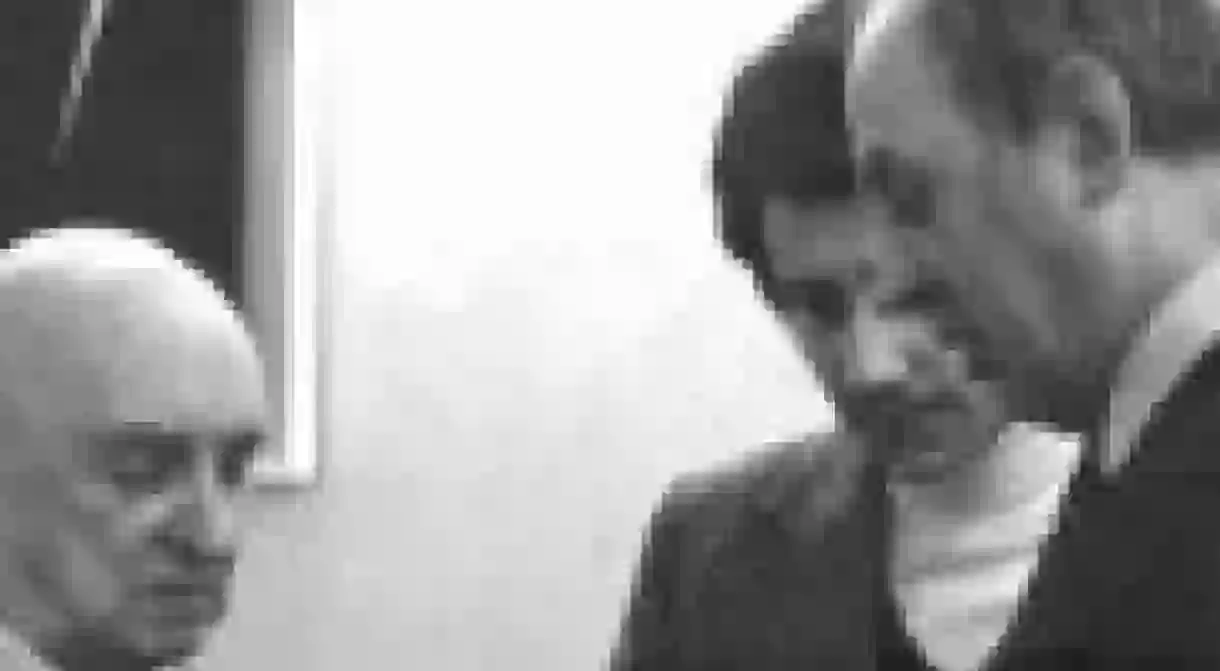Henryk Stażewski Was The Polish Pioneer Of The Avant-Garde

The artist Henryk Stażewski is hailed as one of the undisputed pioneers of the European avant-garde movement during the 20th century. His life’s work spans more than eight decades, crosses borders from Russia to France and finds its apogee in the experimental inter-war period of the 1920s and 1930s. We discover more about Henryk Stażewski, from painter and cubist to surrealist interior designer.
The origin of Stażewski’s artistic philosophy is intimately linked to his period of study at the Warsaw School of Fine Arts during the 1910s. At a time when the first out-and-out Constructivists were appearing in Bolshevik circles in Moscow, the artistic scene in Warsaw was also in the midst of a transformation – moving from the visceral realism of figures like Stanisław Lentz to more abstract forms, drawing inspiration from already established avant-garde schools such as Cubism and Russian Futurism. Consequently, any appreciation of the work produced by Stażewski’s in the following decades must be seen in the greater context of a European-wide movement towards the avant-garde. This took the form, more specifically, of a united desire to merge the respective fields of art, politics, cultural criticism, technology and science.

Stażewski’s journey away from realist and objectivist art forms began in earnest just before his graduation in 1920, when he first joined the Polish Expressionist movement. He began working and exhibiting his pieces alongside artists like Tytus Czyzewski and Mieczysław Szczuka, whose art was overtly cubist in form and veered towards a new Polish aesthetic more in line with the Italian Futurists and Russian Constructivists.
Stażewski’s transformative period reached its height in the New Art Exhibitions of 1923 (in Łódź and Vilnius), which brought with them the foundation of the Polish ‘Blok’ and ‘Praesens’ groups that would go on to dominate the avant-garde scene in Warsaw for the best part of the decade. This marked the final realisation of Stażewski’s dream for a national theory of art, which brought creative processes firmly into the social sphere.
In the late 1920s, Stażewski began exploring the avant-garde offerings of Europe, spending increasing amounts of time in Paris. Here, he quickly ingratiated himself with the abstract artists of the Cercle et Carré and started to exhibit his Constructivist pieces further afield, with a view to propagating his newfound Polish aesthetic throughout other European contemporary art scenes. Soon, Stażewski was being shown in Lviv, Kraków, Basel, Paris, and even New York.
Unfortunately, hardly a single piece of Stażewski’s work created prior to the Second World War remains intact. There are plenty of reasons to believe, however, that his artistic philosophy remained the same, with iconic works like Relief 6 from 1968 displaying the same hallmarks of that pre-war constructivism: the detached geometric shapes; the misaligned tektonika; the uncertain spatial reality. In fact, such works were the beginning of a cycle of reliefs that would span the 1960s and 1970s, rising to become perhaps the most definitive of all Stażewski’s creations—marking what most critics consider to be the height of geometric abstraction in Polish art.
In 1965, Stażewski once again helped to unite the cream of Poland’s avant-garde to form the famous Foksal Gallery of Warsaw, with the help of critics Wiesław Borowski, Anka Ptaszkowska and Mariusz Tchorek. The gallery went from strength to strength, as the stricture enforced by Soviet art censorship began to relax in the late 1960s. Stażewski even began hosting classes and soirées at the state apartment he’d been allocated on nearby Swierczewskiego Street.
Eventually, that same apartment would turn into hallowed ground for followers of the Polish avant-garde movement, representing a temporal space of experimentation where Stażewski – and later Edward Krasiński too – would play with geometry, shapes and new methods of alignment, pushing the boundaries of their own abstract forms.
It was also during this period that Stażewski produced his iconic series of works entitled Reductions, which perhaps represent the prime achievement of his constructivist fantasies after the War. In these pieces, the artist reduces the work to a minimalist array of uniform squares and intersecting lines, inviting the viewer to consider the fundamental component of art and artistic creation – shape. In this way, Stażewski was able to level a critique against the realist artistic traditions that had preceded the avant-garde in both Poland and the USSR and also – through the implicit connections between constructivist creation and social action – indirectly critique the political status quo.
In many ways, it’s that questioning of the world at large that defined Stażewski’s work throughout his life. Some people find themselves contemplating the great swathes of white space left empty on his canvasses and reliefs, wondering what forms or organic creations should be present to create order from his subjectivist chaos. Others look to the geometry that is there and think of the implications that such stark reductionism has on art and – crucially – society in general.













